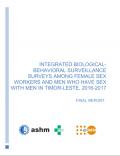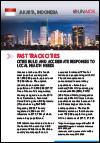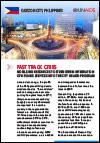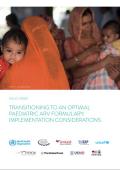What's New
Displaying results 1441 - 1450 of 4913

Resource | Publications,
This report, Legal Gender Recognition in China: A Legal and Policy Review, provides an important resource for the inclusion of transgender people in Chinese laws and policies. The report provides specific recommendations and suggested actions that will promote legal gender recognition and inclusion for transgender people and, if adopted, will facilitate an enabling environment for transgender people to access education, employment, health and other public services. The report also highlights transgender community efforts and initiatives that could serve as new platforms for asserting transgender inclusion and those which could open the doors for more enhanced collaboration among the various sectors.

Resource | Guidelines,
The INSPIRE handbook: action for implementing the seven strategies for ending violence against children explains in detail how to choose and implement interventions that will fit your needs and context.
The seven strategy-specific chapters address the:
- Implementation and enforcement of laws
- Norms and values
- Safe environments
- Parent and caregiver support
- Income and economic strengthening
- Response and support services
- Education and life skills.

Resource | Publications,
This study provides an approximate estimate of how much disease can be prevented by reducing occupational risks to health. The analysis uses a combination of approaches with a clear focus on comparative risk assessment methods, which apply detailed exposure and exposure-risk information. Of the 1.2 million deaths attributable to occupation, 1.1 million (90%) were estimated using comparative risk assessment methods, and the remaining using more limited epidemiological data and expert opinion. While the evidence has shown that many diseases are caused by occupational risks to health, to date, only a limited number of those could be quantified, suggesting that the disease burden from occupational risks presented in this report remains a conservative estimate.

Resource | Publications,
The Papua New Guinea National STI & HIV Strategy 2018–2022, is the strategic guide for the country’s response to STI and HIV at both national, provincial and district levels. The strategy addresses the drivers of the STI and HIV epidemic and builds on achievements of the previous country strategic plans to achieve its goal of contributing to the country’s Vision 2050 through universal access to comprehensive STI and HIV prevention, treatment, care and support.

Resource | Publications,
This report presents the findings of the second round of Integrated Biological and Behavioural Surveillance (IBBS) surveys conducted in 2016-2017 among female sex workers (FSW) and men who have sex with men (MSM) in Dili and Baucau, Timor-Leste. The previous round was conducted in 2011 among the same populations and found an HIV prevalence of less than 5%. The present study is primarily aimed to track the HIV epidemic, monitor sexual risk behaviours, and to measure access to intervention programs in responding to HIV.

Resource | Publications,
Since joining the Fast Track Cities initiative in 2014 the percentage of PLHIV in Bangkok who know their status has increased, from 66% to 79% in 2016. For the Bangkok Metropolitan Administration (BMA), the priorities have moved to the “second 90” (where Bangkok is two thirds of the way, at 60%) and the “third 90” where Bangkok currently stands at 70%.

Resource | Publications,
Viet Nam commercial hub and its most populous city is committed to the 90-90-90 targets and joined the Fast-Track city initiative in 2015. Having recently shown how integrating HIV services into the general health system was possible and recognizing that stigma and discrimination remained formidable barriers to people living with HIV and key populations, a pilot initiative was launched to reduce discrimination in health care settings.

Resource | Publications,
Indonesia is the world's fourth most populous country, with 261,890,000 people, spread over 13,000 islands. The capital, Jakarta, has an estimated population of 10,370,000 (2017). One of the world's mega-cities, the mayor signed on to the 2014 Paris Declaration, Fast-track Cities: Ending the AIDS Epidemic (Cities Achieving 90-90-90 Targets by 2020).

Resource | Publications,
Quezon City, (population 2.9 million, 2015) the most populous city in the country, has been at the forefront of the response. In 2015 to 2016, over 1500 new cases of HIV were diagnosed, approximately 10% of all cases in the country, while its population comprises less than three percent of the total Philippine population of 103 million.

Resource | Laws and Policies,
Antiretroviral treatment (ART) optimization is a key pillar in the AIDS Free agenda to reach the goal of ensuring 95% of all infants and children have access to lifesaving treatment.
This policy brief outlines key considerations to facilitate effective transition to more clinically appropriate regimens as optimal ARV medicines and dosage forms become available.





